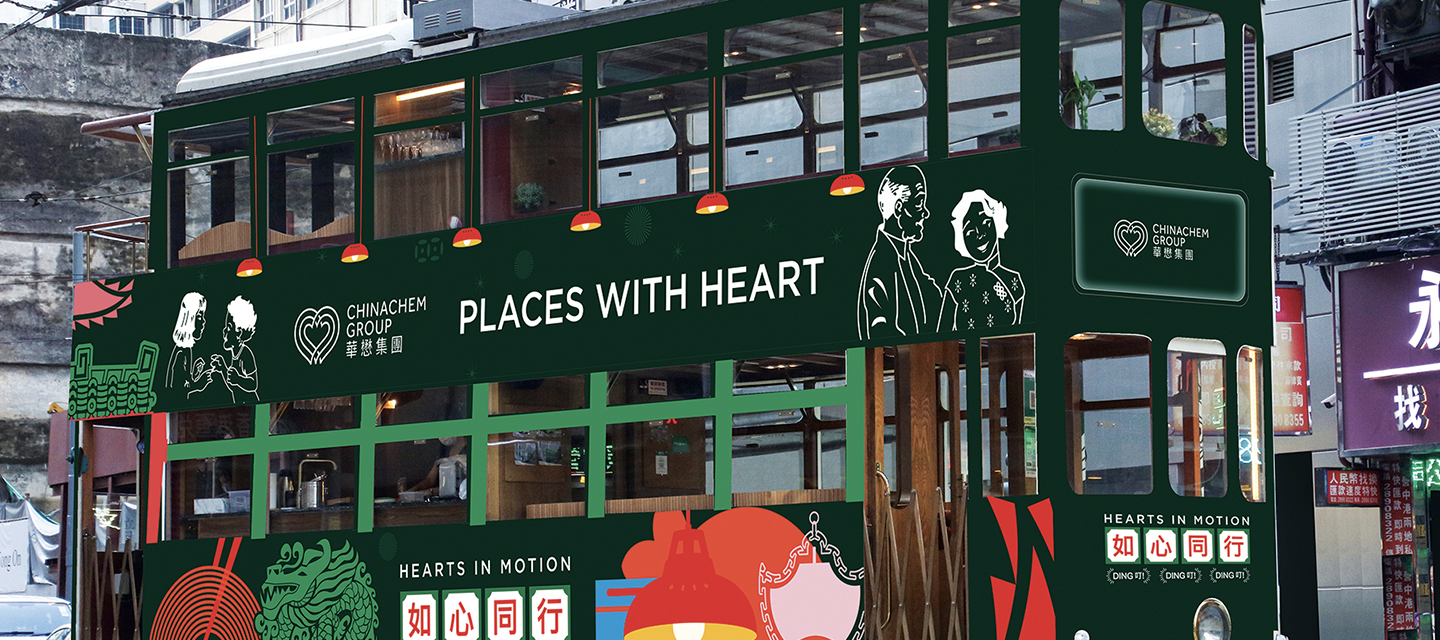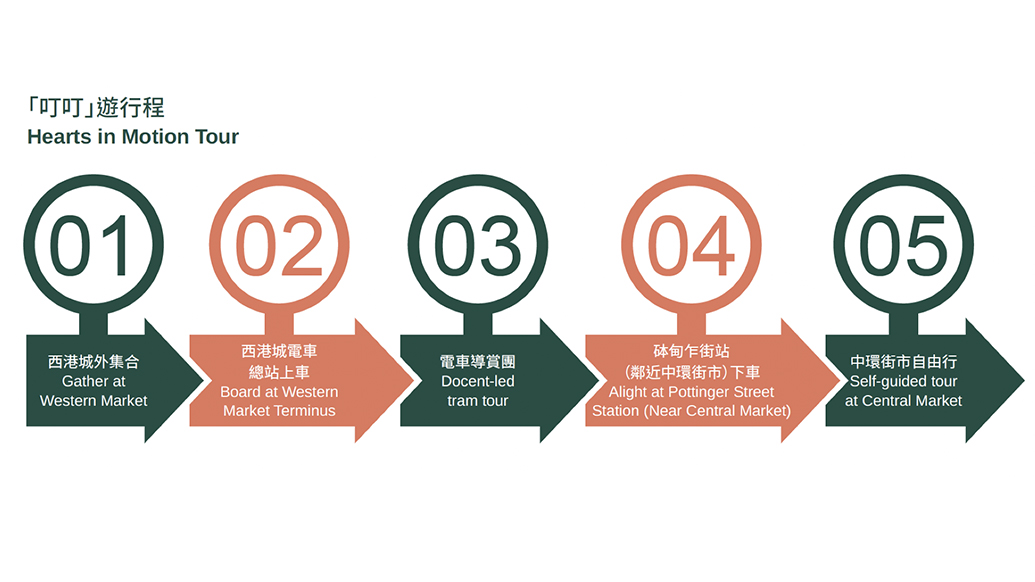- 《LIFE+》Magazine
- 《LIFE+》Magazine Issue List
- 《LIFE+》 Magazine Issue 4
- Take a TRAM RIDE with Hearts in Motion
-
content 2
-
content 2
-
content 2
-
content 2
-
content 2
-
content 2
-
content 2
-
Take a TRAM RIDE with Hearts in Motion
Text by: Bernice Chan29 November 2021Hong Kong residents who may not be familiar with the city’s history can learn more by taking a special shuttle tram that runs west to east along Hong Kong island. People like underprivileged youth, the disabled, and the elderly can ride the special tram and listen to the guided tours through Chinachem Group’s cultural and community programme – Hearts in Motion Ding Ding Ding that last over an hour that offer an accessible and mobile lesson into Hong Kong’s past.
Alvin Yip, Curator-in-Chief of Designing Central, gave a lot of support and creative ideas for this programme. He is also the designer who outfitted the stylish tram 18 with comfortable seating, tables, and a sound system two years ago.
He says the tram, which has been a part of Hong Kong since 1904, is a very appropriate vehicle to ride in, as it has witnessed the city’s development over the decades. “The tram is probably the most visible and most valuable character or element in Hong Kong. It has existed as a system for so long and it is certainly a living heritage,… and a cultural asset for Hong Kong people,” Alvin explains.While participants finish the tram ride and get off at the recently revitalised Central Market that has a history dating back to 1939, he says instead of using a shuttle bus, the tram is a better way to ferry visitors there, and along the route, they can learn more about the city’s heritage through stories.Some of those who will take the tram ride may include young people from Tsuen Wan, Tuen Mun and Tin Shui Wai.“Many of them have never been to Central; the furthest they go is Mong Kok. Even to them Tsim Sha Tsui is a little bit far for them,” Alvin says. “They really hardly go to the island side.”Aside from Central Market, other landmarks they can see include Western Market in Sheung Wan, the old Bank of China Tower which is only steps away from the futuristic one designed by I.M. Pei, as well as The Pawn, previously known as Wo Cheong Pawn Shop.In addition, Alvin says the history behind the districts and areas are just as interesting. For example, Admiralty in Chinese is “Golden Bell” because in the 1800s, the area was a military zone and there was a large golden clock that people set their watches to. Another is Canal Road, which in Chinese is known as “Ngo Geng Kiu”, or literally “Goose Neck Bridge”. Alvin explains there used to be a canal that had a shape similar to a goose’s neck, long and narrow, that people crossed over by bridge.Historical anecdotes like these bring the city’s history alive, says Alvin. “This experience is probably the most straight-forward intensive course of knowing Hong Kong in a nutshell. Of course it’s much better than a classroom. For the younger kids it’s the most mobile classroom on the road for them to know about Hong Kong.”
“The tram is probably the most visible and most valuable character or element in Hong Kong. It has existed as a system for so long and it is certainly a living heritage,… and a cultural asset for Hong Kong people,” Alvin explains.While participants finish the tram ride and get off at the recently revitalised Central Market that has a history dating back to 1939, he says instead of using a shuttle bus, the tram is a better way to ferry visitors there, and along the route, they can learn more about the city’s heritage through stories.Some of those who will take the tram ride may include young people from Tsuen Wan, Tuen Mun and Tin Shui Wai.“Many of them have never been to Central; the furthest they go is Mong Kok. Even to them Tsim Sha Tsui is a little bit far for them,” Alvin says. “They really hardly go to the island side.”Aside from Central Market, other landmarks they can see include Western Market in Sheung Wan, the old Bank of China Tower which is only steps away from the futuristic one designed by I.M. Pei, as well as The Pawn, previously known as Wo Cheong Pawn Shop.In addition, Alvin says the history behind the districts and areas are just as interesting. For example, Admiralty in Chinese is “Golden Bell” because in the 1800s, the area was a military zone and there was a large golden clock that people set their watches to. Another is Canal Road, which in Chinese is known as “Ngo Geng Kiu”, or literally “Goose Neck Bridge”. Alvin explains there used to be a canal that had a shape similar to a goose’s neck, long and narrow, that people crossed over by bridge.Historical anecdotes like these bring the city’s history alive, says Alvin. “This experience is probably the most straight-forward intensive course of knowing Hong Kong in a nutshell. Of course it’s much better than a classroom. For the younger kids it’s the most mobile classroom on the road for them to know about Hong Kong.” -
content 2
-
content 2
-
content 2
-
content 2
-
content 2
-
content 2
-
content 2
-
content 2
-
content 2
-
content 2
TABLE OF CONTENTS
- Spotlight
- Transformation
- Livelihood
- Neighbourhood
- Community
- Neighbourhood
- Taste
- Heritage
-
Happening
- NINA MALL transforms into Finland Wonderland for Christmas9
- Celebrate the festive season with lavish Christmas offerings from Nina Hospitality10
- Lights up for an inclusive, joyful Christmas11
- Chinachem Group fully supports the Venice Biennale of Architecture12
- Chinachem Group wins the SDG Achievement Awards Hong Kong13
- Community
- Taste
- People
- Behind the Scenes
Page0of0
Stay in touch with us
